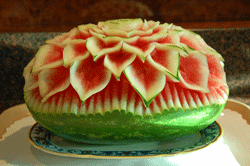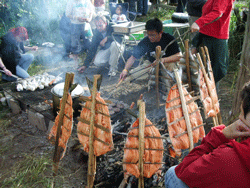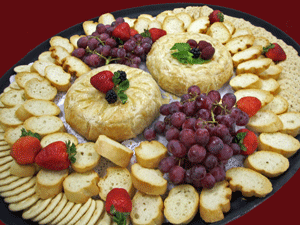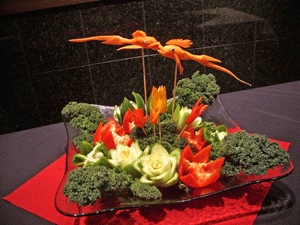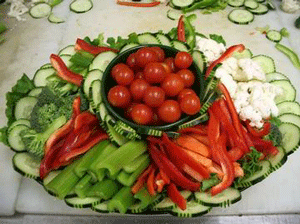
Personal Culinary Gear - Tools When it comes to what I work with in the kitchen, I get particular when I have a job to do. Relying on the utensils already in a commercial kitchen is definitely a hit or miss situation. If you are serious about your profession or want to be at your best in any given opportunity that deals with food, it is best to bring your own. Having your own equipment can give you the edge on your competition and make you more comfortable doing your job. You will also look more professional by having your own tools. There are a lot of different sets out there that will give you a decent start, but I have found that acquiring each piece on a performance basis has been more effective for me since each tool does a different kind of work. It may not look pretty, but the tools are chosen for a purpose. What I recommend to someone that has to get a starter kit right away, and doesn’t mind spending a little bit of money, is to see if there is a set of tools that will meet your needs for the time being. It's a great way to start, but plan on replacing individual pieces as you go along. My list of recommended tools is as follows and in this order: Chef Knife – Comfortable to your hand, but at least 7” long. A longer blade allows you to work more easily with seafood, meats and root vegetables. If you can handle it, get a 10”, but the main thing is to be able to work with a size you can manage. There are different sizes and weights to choose from. A heavy knife gets really heavy after an 8-hour shift, but you can’t beat it for plowing through large amounts of food. My wife loves a lightweight 7” Sushi knife with a Teflon coating, but she works mainly with veggies. Get the best you can afford; this is your main stay knife. This knife is so important that if I had to choose only one tool it would be my Chef Knife. I can do all my cutting, trimming and garnishing with that alone. Thankfully I don’t have to choose and I actually have two different styles that I carry with me at all times. The cost is about $50-300, depending on the manufacturer. Paring Knife – There are tons of cheap paring knives that you can purchase, and once again, this is a key tool in your arsenal. Buy a good one with a good grip that will stay sharp. You want one with at least a 4” blade and comes to a sharp point on the end. This allows you enough blade to get through a large onion or trim a piece of meat. The sharp tip will help you remove onion, tomato or strawberry stems with ease. If the quality is good enough, it will allow you to use your paring knife for meat trimming until you can afford a rigid Boning Knife. About $10-25. Honing Steel – This is the long bar that most people refer to as a sharping tool. It is not a sharpener, but a tool to hone or bring the edge back into alignment. This allows an already sharp blade to work correctly since normal use of a knife will bend the edge and it will appear as if it is dull. A few strokes of a good Honing Steel will make life good again. Get one that is at least 10” long, a shorter one will restrict your longer blades as you give it even strokes, causing them to be crooked or misaligned. Try to avoid using the short cheap ones that come with your standard department store knife sets. Getting one that is too long will also be prohibitive to being portable. About $15-30.00 Rigid Boning Knife – A narrow blade about 6” long that is used in trimming and boning meat. This needs to be a quality steel that will keep an edge. It is worth spending a few bucks if you intend to use it much. The long tapered end will assist you in separating the fat from the muscle and the rigid strength will help getting under the silverskin that exists under the fat or at muscle ends. Silverskin is the tendon-like material that never gets tender when cooked, so it has to be removed. About $15-45. Slicer– This knife is used for slicing hams, roasts, turkeys and other large muscles of meat. It should be about 12” long and most have a rounded tip. Some companies produce a pointed tip; Commercial Kitchens usually use the rounded tip. Having Gratons on the sides (little divots on the sides) will help in avoiding the suction that occurs on some meats. About $15-80.00 Bread Knife – This should be the only serrated blade in your kit. A serrated blade cannot be sharpened by you and therefore not desirable … except for the Bread Knife. There are many different styles out there, but once again, quality will save you money in the long run. I have used the same Cutco Bread knife for the past 10 years because it stays sharp, is long and thin with a rounded end. The sharpness of a bread knife will allow you to cut through warm soft baguettes, slice tomatoes, semi-frozen products and any number of things that are too tender to attempt with a regular blade. $15-80. Peeler – There are different kinds out there, most fit into two styles, blade peelers & Y-peelers. Find a peeler that fits your hand and stays sharp. There are some peelers that retract after using them and this protects them from banging into other items that may dull them. It is almost impossible to sharpen them, so spending a bit for a good quality one will save you in the long run as long as you can keep it. Along with your paring knife, peelers are one utensil that everyone wants to borrow. So perhaps investing in two is not a bad idea, the good one for yourself and the regular one for everyone else. $2-10.00 Shears – A good pair of Scissors or Cooking Shears is essential. Once again, I carry the Cutco Version because it cuts through just about anything without breaking. It is most used for garnish work in prepping grapes, opening packages and bags, green onions or chives, but useful for portioning whole roasted chickens or sectioning ribs. I like the heavy duty shears because the light weight ones I used to use broke when I needed them the most. With a Cutco pair of shears, that doesn’t happen. $10-40. Filet Knife – Flexible yet sharp, this knife is very handy for Seafood. The blade must be at least 6” long but no more than 10”. If you’re working with bigger fish, you won’t be using this knife anyway. I listed this somewhat as an afterthought because I use my 10” Chef Knife for almost all my fileting and skinning of fish. This is the same for breaking down whole Salmon or whole chickens. The blade has to be razor sharp to do the best job. $15-80. Utility Knife – Medium-length blade that is great for slicing up mushrooms and just about anything that may be a bit small for your Chef Knife or too large for your Paring Knife. I don’t own one, but I know that many French Chefs use them in place of the Paring Knife. They usually are about 6”-8” long with a sharpened end. About $15-50. Portable Can Opener – I don’t care what kitchen you’re in, you can’t replace your own “working” Can Opener. Most of the ones in the drawer are broken or only work partway around a can and there is always someone using the big commercial ones on the other side of the kitchen. If you have a good quality, sharp and clean Can Opener you’re in business and you’ll be surprised how many people come to borrow yours. Get one with a large, easy to turn handle, something substantial so that you don’t get a cramp turning. Portable hand Can Openers with a crank style handle are available; the trick is to get one that stays sharp. $10-25. Carving Fork – Sometimes this tool comes with a carving set when purchase your Carving Knife. There are a few things to think about if you’re in this as a professional. Most Carving Forks are wimpy to say the least. You stick one in a prime rib and lift and the tang between the fork and handle ends up looking like a tuning fork. They just don’t have the strength to protect you when you need it. So don’t worry about what it looks like, go for strength and durability. Nothing worse than serving up a new Prime Rib muscle on the cutting board … only to have it slip on the floor because you didn’t have the right tool. That meat on the floor is worth more than your $15 Carving Fork! $25-75. Whisk – Another elusive item in many Commercial Kitchens. There may be many at the start of the shift, but by the mid – end they will all be in the dish pit. Get a mid-range metal handled Whisk with stiff wires. The stiffer wires will help you get the chicken or beef base out of the container and into your hot water for that broth, allow you to mix and then with a quick rinse and dip in sanitizer you’re all ready for the next use. These are cheap but priceless. $2-4. Rubber Spatula – Where would you be without a Rubber Spatula on hand? I only use the high temp versions with a blade of about 2 ½” x 4”. A black or dark red handle usually specifies that it is a high temp spat able to withstand up to 500 degree heat. $5-10. Small Knife Sharpener – Something portable that does a good job and yet doesn’t take a lot of space. Remember that each time you “sharpen” your knife, you’re removing part of your knife. I have a 100-year old Chef Knife that I purchased that looked like it was 100 years old because there wasn’t a lot left of the blade. Professionals use their tools, but only sharpen when they REALLY need to. That is what your Honing Steel is for … realigning your blade and conserving metal on your knife. Too many people kill their investments by over-sharpening their tools. Recommended sharpeners are ceramic sticks of some kind that force you to keep a specified angle for maximum effectiveness. $10-50. Zester – Garnish tool that allows you to stroke the vegetable and remove strips of skin. Just about everyone makes one, but most don’t really work well, test the edges of the holes on top to make sure they are actually sharp. This is a great tool for cucumbers, and other veggies. There is another tool that is actually a micro-plane that many people consider to be a zester. It is used to take the "zest" from lemons and limes. When I describe zester, I'm talking about the tool that has a row of horizontal holes along the top and a nice comfortable handle. $3-8. Pastry Brush – I use a silicone brush because it is easy to clean and store in my knife bag. It isn’t the best, but it’s the cleanest and I don’t need it very often … but when I do it only cost me $2-5.
|



